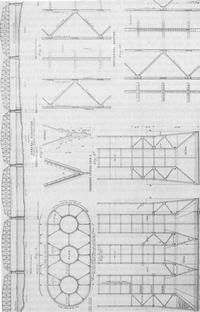


Chapter 6
I Construction During The Settlement Years
II The Use Of Timber As A Structural Material
III Structural Steel
IV Concrete Technology
V Housing
VI Industrialised Pre-cast Concrete Housing
VII Ports And Harbours
VIII Roads
IX Heavy Foundations
i Hawkesbury Railway Bridge
ii Impact of Floods
iii Hydraulic Jetting
iv Development Between First and Second World Wars
v Foundations Post-Second World War
vi Victorian Arts Centre
vii Bowen Bridge
X Bridges
XI Sewerage
XII Water Engineering
XIII Railways
XIV Major Buildings
XV Airports
XVI Thermal Power Stations
XVII Materials Handling
XVIII Oil Industry
XIX The Snowy Mountains Scheme
XX The Sydney Opera House
XXI The Sydney Harbour Bridge
XXII Hamersley Iron
XXIII North West Shelf
Sources and References
Index
Search
Help
Contact us

Hawkesbury Railway Bridge
One of the foremost among these was the Hawkesbury Railway Bridge (Fig. 23), built between 1886 and 1889, by the Union Bridge Company of New York, who had successfully tendered in world-wide competition for its design and construction, with Messrs Anderson and Barr of Jersey City, U.S.A. as sub-contractors for the foundation work.
The reported ground conditions consisted of 'a bed of mud extending to a depth varying from 60 to 170 feet below high water mark, and overlying the sand'. The maximum water depth was 77 feet and the tidal range 7 feet. The bridge was designed with six piers founded on caissons, sunk through the 'mud' to the underlying sand. The caissons, 48ft x 20ft in plan, were constructed with hollow cellular walls and three internal compartments. Sunk to a maximum depth of 162 feet below high water, they were the deepest bridge foundations of their time. Two of the first three caissons diverged by 3 to 4 feet from their intended positions during sinking, but the later ones were modified and were accurately sunk without difficulty.
People in Bright Sparcs - Sewell, A. P.
 |
Australian Academy of Technological Sciences and Engineering |  |
© 1988 Print Edition page 350, Online Edition 2000
Published by Australian Science and Technology Heritage Centre, using the Web Academic Resource Publisher
http://www.austehc.unimelb.edu.au/tia/351.html